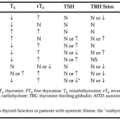X CHROMOSOME INACTIVATION
In eutherian females (placental mammals, i.e., other than monotremes and marsupials), one of the two X chromosomes is inactivated early in embryonic development, thus providing a mechanism for genetic dosage compensation.47 In eutherians, this inactivation begins in the trophectoderm in the early blastocyst stage and is characterized by a preferential paternal X chromosome
inactivation. This also is true of X chromosome inactivation that subsequently occurs in the primitive endoderm during the midblastocyst stage. During the late blastocyst stage, however, X chromosome inactivation occurs randomly in the inner cell mass, with no paternal or maternal preference, thus resulting in mosaic females composed of a mixture of cells that have either a maternally or paternally active X chromosome. In somatic cells, this inactivation becomes fixed such that all descendants from a particular cell maintain the same inactivated X chromosome. In the germline, however, this inactivation must be reversed at the time of meiosis so that each X chromosome has an equal chance of contributing to the gametes.48
inactivation. This also is true of X chromosome inactivation that subsequently occurs in the primitive endoderm during the midblastocyst stage. During the late blastocyst stage, however, X chromosome inactivation occurs randomly in the inner cell mass, with no paternal or maternal preference, thus resulting in mosaic females composed of a mixture of cells that have either a maternally or paternally active X chromosome. In somatic cells, this inactivation becomes fixed such that all descendants from a particular cell maintain the same inactivated X chromosome. In the germline, however, this inactivation must be reversed at the time of meiosis so that each X chromosome has an equal chance of contributing to the gametes.48
In marsupials, this pattern of X chromosome inactivation is different in that it is always the paternal X chromosome that is inactivated. This may not necessarily be a functional difference, however, because the marsupial blastocyst has no inner cell mass. The coincidence of the timing of X chromosome inactivation and cell commitment to either trophectoderm or inner cell mass lineages in eutherians strongly suggests that these two processes are linked in some meaningful way. Perhaps the preferential X chromosome inactivation may be part of a system that is necessary to prevent rejection of the conceptus. Alternatively, it also has been suggested that preferential X chromosome inactivation may prevent the accumulation of genes necessary to the proper development of extraembryonic membranes on the paternal X chromosome. This would adversely affect the development of boys because they do not possess a paternally derived X chromosome.48,49
Stay updated, free articles. Join our Telegram channel

Full access? Get Clinical Tree





